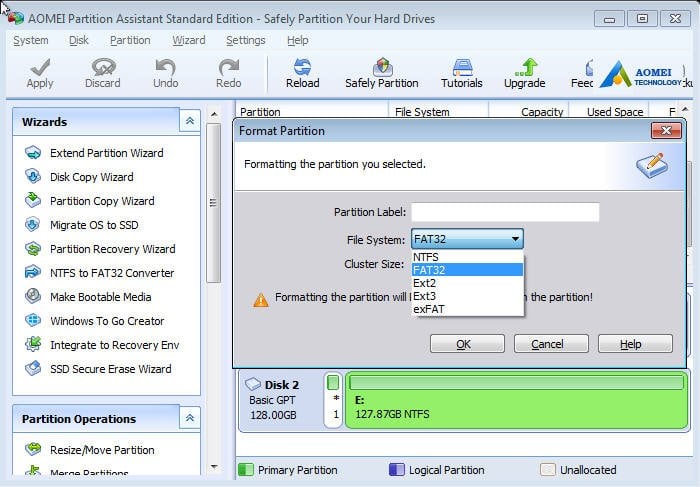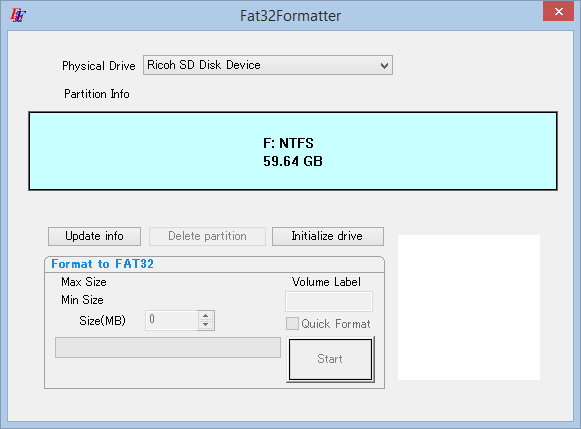Format 128gb Flash Drive To Fat32 Windows 10
You have a brand new high-capacity flash drive that can store more than the hard drive of your first three computers combined, but when you go to copy a large file it denies you. Read on as we show you how to solve your flash drive frustrations.Dear How-To Geek,I recently purchased a 64GB USB 3.0 flash drive, plugged it into my computer, and started copying some files onto it I wanted to transfer to another computer. The little files (MP3s, documents, etc.) all transferred fine but I have some DVD ISO files on there and when it came time to copy them I got the error “The file ‘DVDBACKUP1’ is too large for the destination file system.” and the transfer fails.What exactly does that error mean? Why can’t I put a 4.5GB file on a 64GB drive? Help!Sincerely,Flash Drive FrustratedWe can certainly understand your frustration: here you were all ready to copy the files and then it just ground to a halt with a relatively cryptic message. Don’t worry though! We can not only solve the mystery of the stubborn file but show you how to fix it in the process.
(2015–2016). (2015). (2015).  (2015–2016).
(2015–2016).
First, let’s explain why you couldn’t copy it in the first place: the flash drive’s file system. A file system, which is a separate thing from an operating system and other mechanisms on a computer, is an organizational scheme used to control how data is stored and retrieved on a a given storage medium (like a hard disk, a DVD disc, or a removable flash drive). There are a multitude of file systems in the world that have features big and small that are useful (and even mission critical to the applications they are used in) such as native error checking and correction, journaling, permission schemes, and more.RELATED:Nearly every flash drive in the world ships formatted as with the FAT32 file system. FAT32 isn’t the most robust file system around but it has been around for ages, it is widely supported, and most of the time the applications one would use a flash drive for do not require the advanced features found in other file systems (and, in fact, some of those advanced features could even shorten the life of the drive via increased read/writes). If you’re curious as to why FAT32 is still so prevalent, check out our articleDespite the ubiquitous nature of FAT32, however, it has one big shortcoming in the age of large files: the maximum possible file size for FAT32 files is 4GB.


Format 128gb Usb To Fat32 Free

(If we’re being technical it’s actually 4GB minus a single byte or 4,294,967,295 bytes). These days 4GB isn’t exactly a whopper of a file and it’s real easy, as you discovered, to exceed the 4GB barrier with large video files, DVD and Blu-ray ISOs, and other large files.Now that we know why you can’t copy that DVD ISO file over to your nice spacious 64GB flash drive, what can we do about it? Fortunately the fix is very simple. We’ll switch the file system to a file system which allows for larger-than-4GB file sizes.We’ll demonstrate with a 16GB flash drive we have laying around. Now that we’re sporting a large-file-friendly flash drive it’s time to transfer a large file and see what happens.Success! Now that the flash drive is formatted to NTFS it has no issue accepting a 4+GB file size and we’re able to transfer that 7.63GB ISO with ease. Your super sized flash drive is now ready to accept super sized files.Have a pressing tech question about storage, Windows, or any other computer problem under the sun?
Shoot us an email with your question at ask@howtogeek.com and we’ll do our best to answer it.